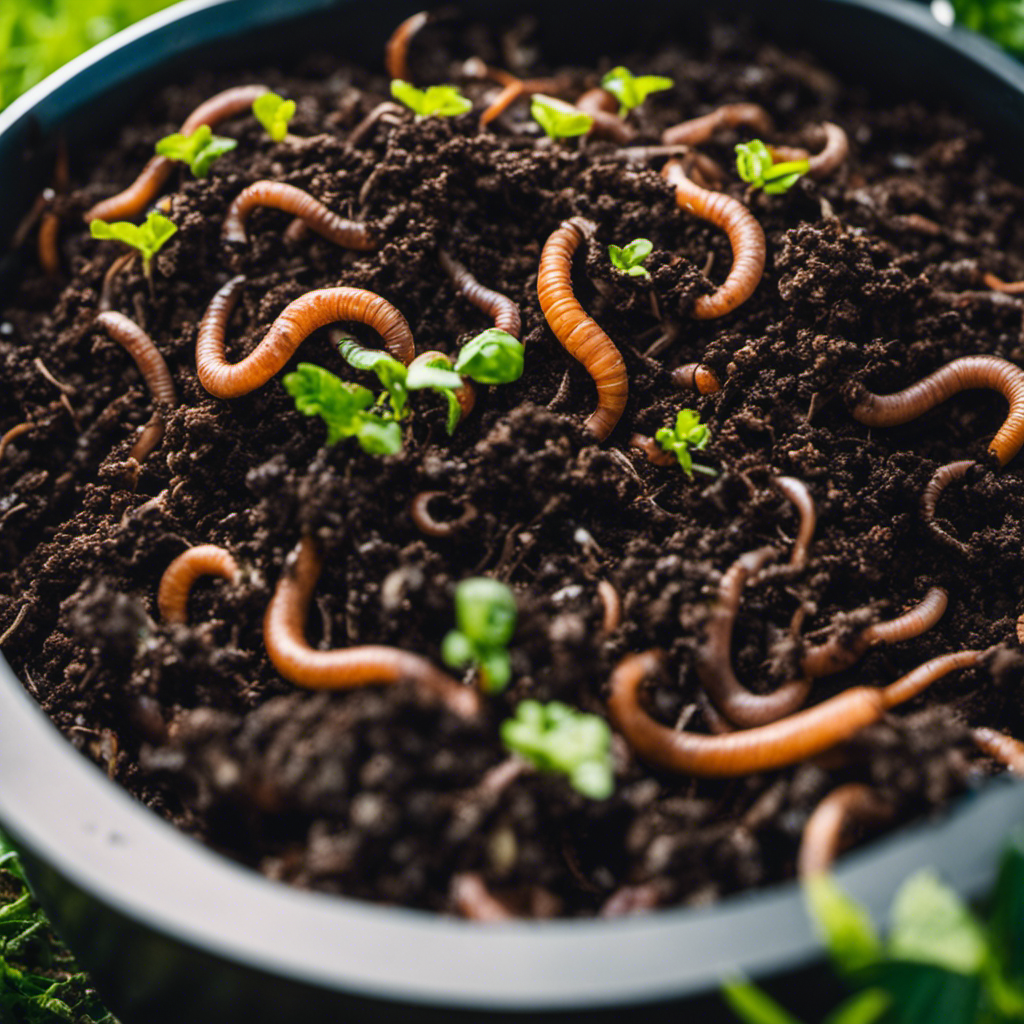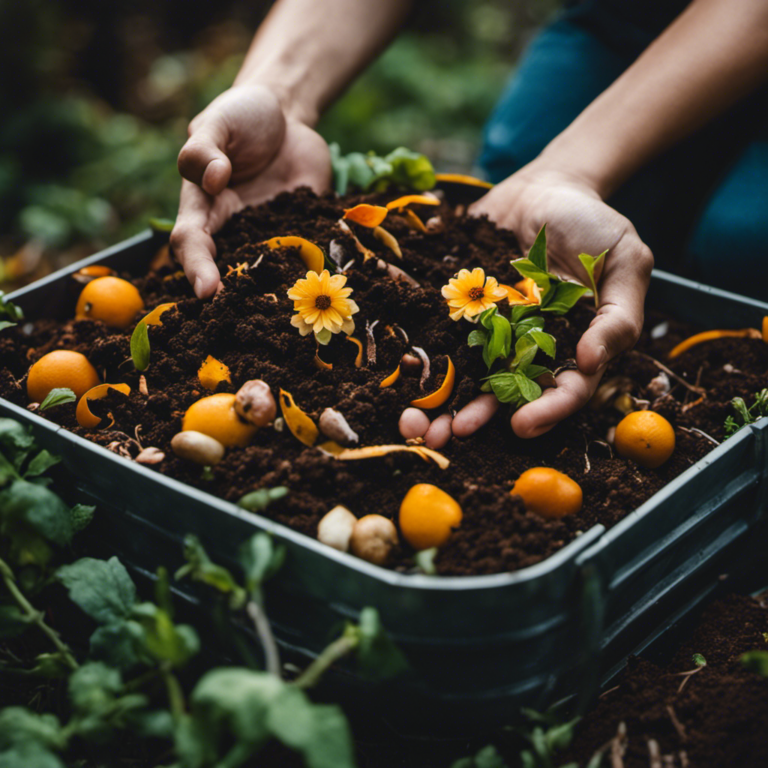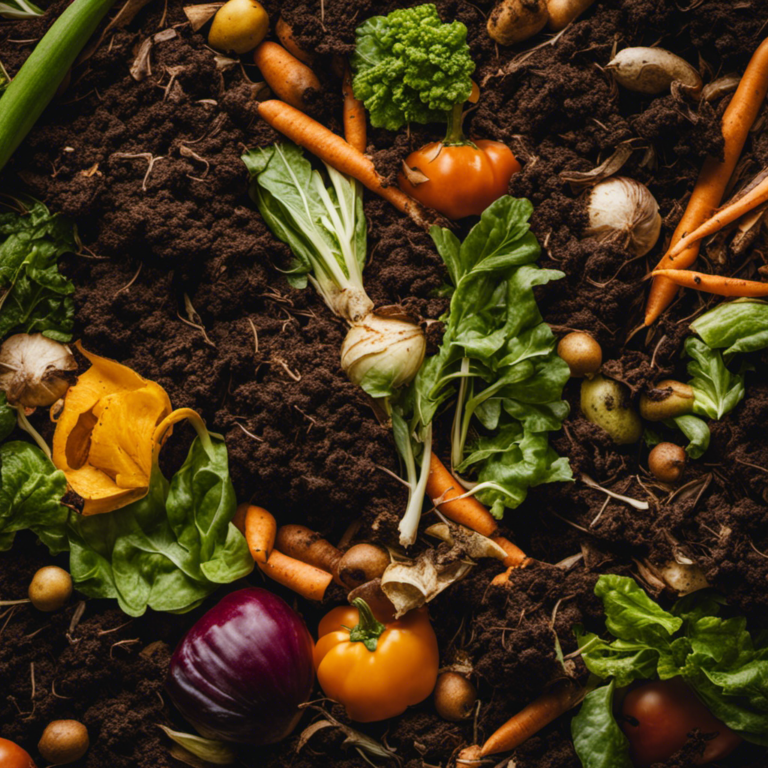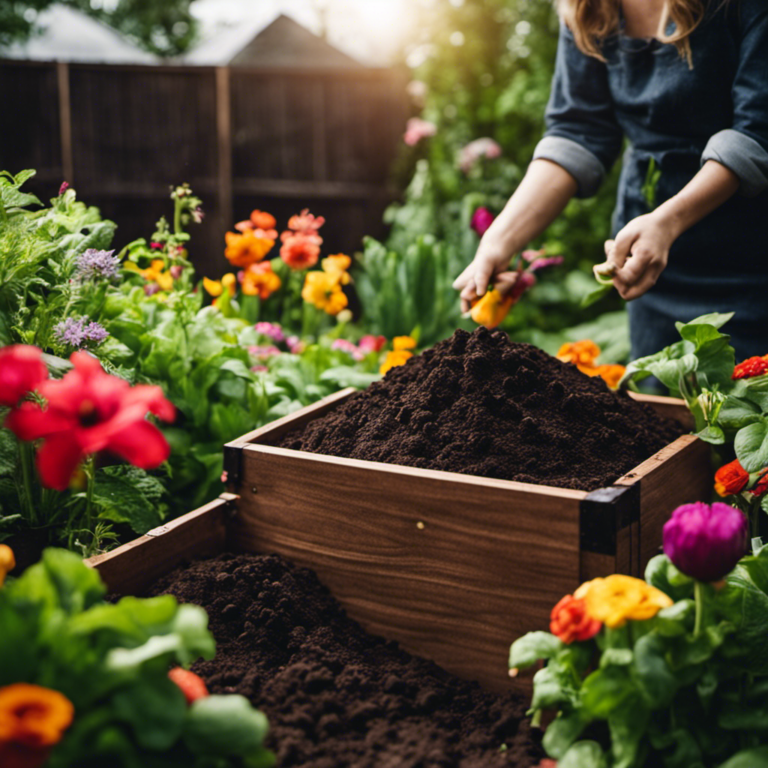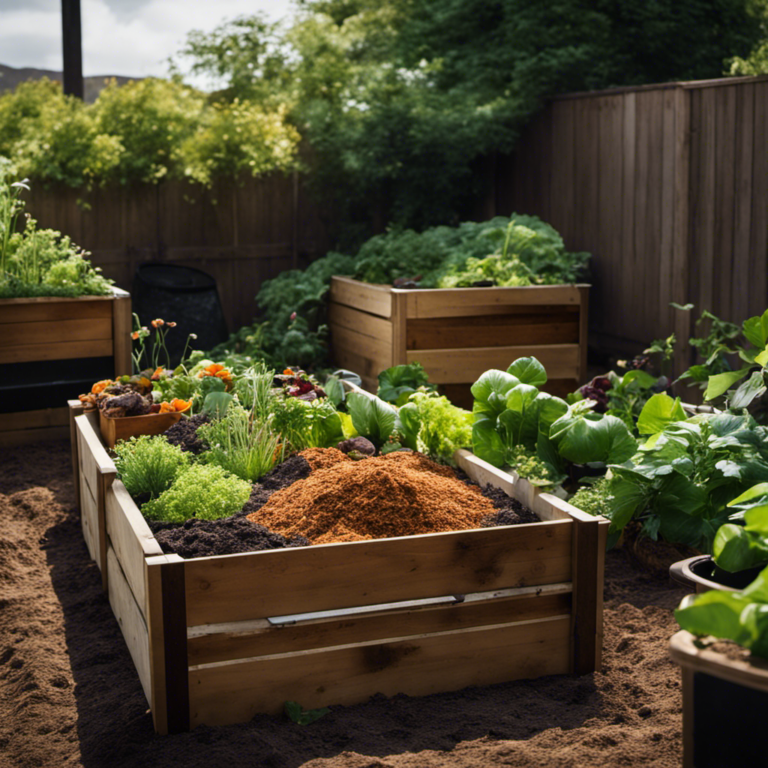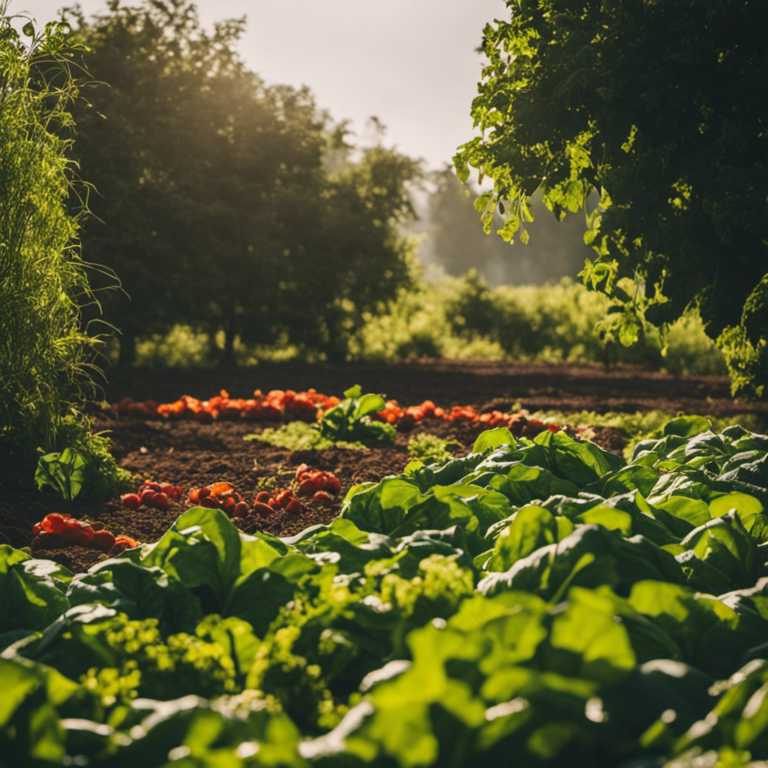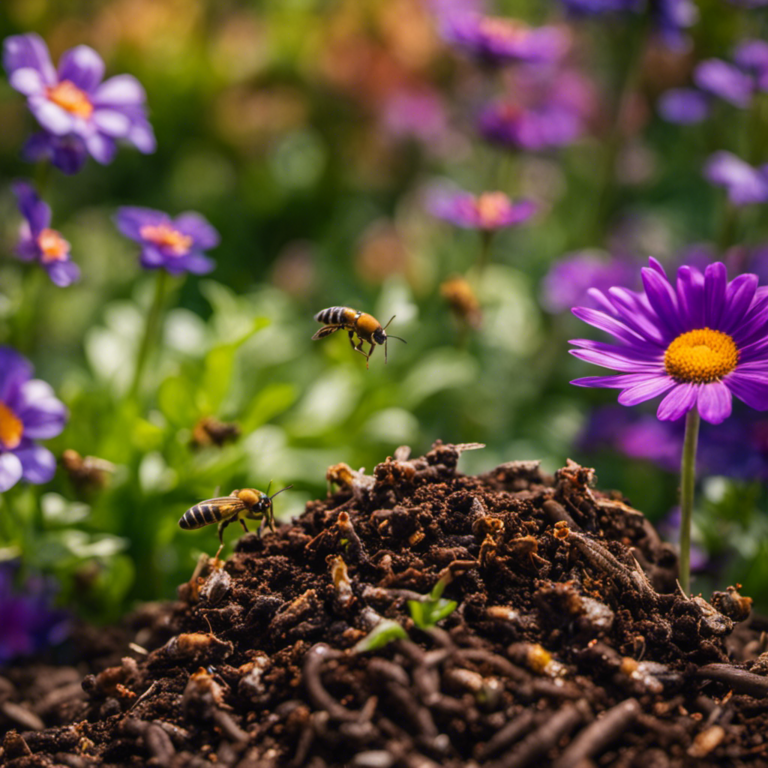Hey there! So you’re interested in learning about composting methods for organic farming? Well, you’re in the right place. In this article, I’ll share some effective techniques that can help you turn your waste into valuable nutrients for your crops.
We’ll explore traditional composting, vermicomposting with earthworms, bokashi composting, aerobic composting with a compost tumbler, and using green manure cover crops.
These methods will take your organic farming to the next level!
Key Takeaways
Choosing the right composting method is crucial for achieving excellent results in organic farming. Just like a conductor carefully selects instruments to create a harmonious melody, farmers must carefully select the appropriate composting method to create nutrient-rich soil.
There are various effective composting techniques available, including traditional methods, vermicomposting with earthworms, bokashi composting, aerobic composting using a compost tumbler, and composting with green manure cover crops. Each method plays a vital role in the success of organic farming.
By composting wisely, farmers can enjoy the benefits of healthy and thriving crops.
Traditional Composting Techniques
Traditional Composting Techniques
While there are many modern composting methods available, I believe that traditional composting techniques, such as windrow composting and sheet composting, continue to be effective and practical for organic farming.
Traditional composting relies on the natural process of decomposition by microorganisms to break down organic materials into nutrient-rich compost. One of the main advantages of traditional composting is its promotion of aerobic decomposition, which occurs in the presence of oxygen. This aerobic process helps maintain a healthy balance of microorganisms and facilitates the breakdown of organic matter into stable humus. In contrast, anaerobic composting, which occurs without oxygen, can result in unpleasant odors and the release of harmful gases.
Windrow composting involves creating long, narrow piles of organic materials, such as leaves, grass clippings, and kitchen scraps. These piles are regularly turned to ensure proper aeration and decomposition. This method is particularly suitable for large-scale organic farming operations, as it can efficiently handle significant volumes of organic waste.
Sheet composting, also known as lasagna gardening, is another traditional technique that involves layering organic materials directly on the soil surface. This method mimics the natural decomposition process and allows for gradual nutrient release into the soil. It’s a practical and low-maintenance approach that’s well-suited for small-scale organic farming.
Vermicomposting With Earthworms

Moving on to vermicomposting with earthworms, I’ve found this method to be highly effective in improving the decomposition process and nutrient content of organic materials. Let’s explore the benefits of vermicomposting and learn how to set up a worm bin step by step:
-
Benefits of Vermicomposting:
- Increased nutrient availability: Earthworms break down organic matter into nutrient-rich castings that plants can easily absorb.
- Improved soil structure: The tunnels created by earthworms enhance water infiltration and root penetration.
- Enhanced microbial activity: Earthworms introduce beneficial microbes to the compost, which promotes decomposition and nutrient cycling.
-
Step-by-step Guide to Setting up a Worm Bin:
- Choose a suitable container: Opt for a plastic or wooden bin with drainage holes to ensure proper aeration and drainage.
- Prepare bedding material: Shredded newspaper, cardboard, or coconut coir work well as bedding materials for the worms.
- Add worms and organic matter: Introduce red worms (Eisenia fetida) to the bin and add organic waste like fruit and vegetable scraps.
- Maintain proper conditions: Keep the bedding moist but not overly wet, and maintain a temperature range of 55-77°F (13-25°C).
- Harvest and use the vermicompost: After a few months, the castings will be ready to use as a nutrient-rich fertilizer for your plants.
Bokashi Composting for Quick Decomposition
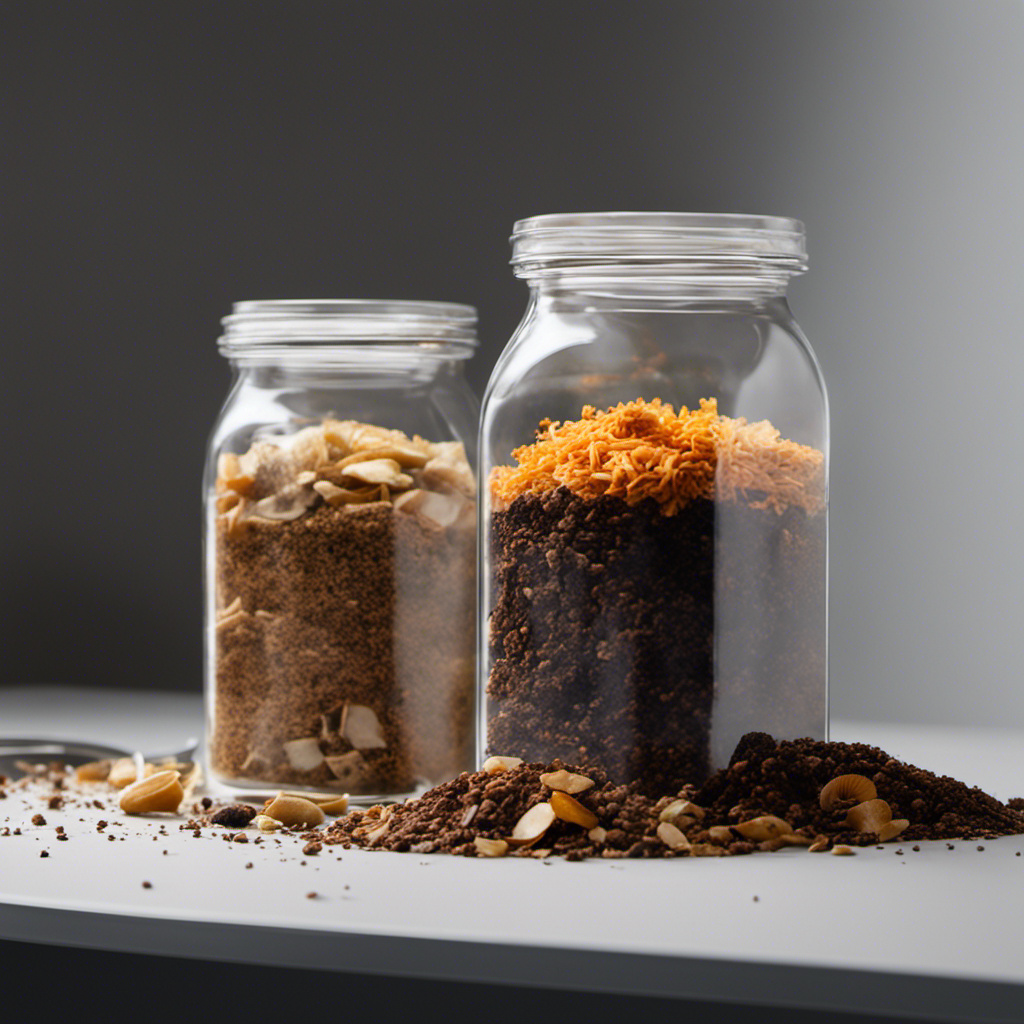
Bokashi Composting for Efficient Organic Waste Decomposition
Let’s explore the benefits and process of bokashi composting, a Japanese technique that promotes quick decomposition of organic waste.
Bokashi composting utilizes a mixture of beneficial microorganisms to efficiently break down organic matter. One of the key advantages of bokashi composting is its ability to handle a wide range of materials, including meat, dairy, and cooked food, which can be challenging for traditional composting methods. This makes bokashi composting a great option for individuals looking to minimize food waste and reduce their environmental impact.
The process of bokashi composting is straightforward. To begin, you’ll need an airtight bokashi composting bin with a drainage system. Start by adding a layer of food waste, then sprinkle a handful of bokashi bran (containing the beneficial microorganisms) on top. Repeat this layering process until the bin is full, making sure to press down the waste to eliminate excess air. Once the bin is full, seal it tightly and allow it to ferment for approximately two weeks. During this period, the microorganisms will break down the waste, resulting in a nutrient-rich compost.
In comparison to traditional composting methods, bokashi composting offers several advantages. It works faster, producing compost in just a few weeks, whereas traditional composting can take months. Bokashi composting also requires less space and doesn’t generate unpleasant odors, making it suitable for indoor use. Additionally, the resulting compost from bokashi composting retains more nutrients and beneficial microorganisms, significantly enhancing soil health and promoting plant growth.
To summarize, bokashi composting provides numerous benefits for efficient organic waste decomposition. It can handle a wide range of materials, works faster than traditional methods, and yields nutrient-rich compost. If you’re seeking an efficient and effective way to compost your organic waste, bokashi composting is definitely worth considering.
Aerobic Composting Using a Compost Tumbler
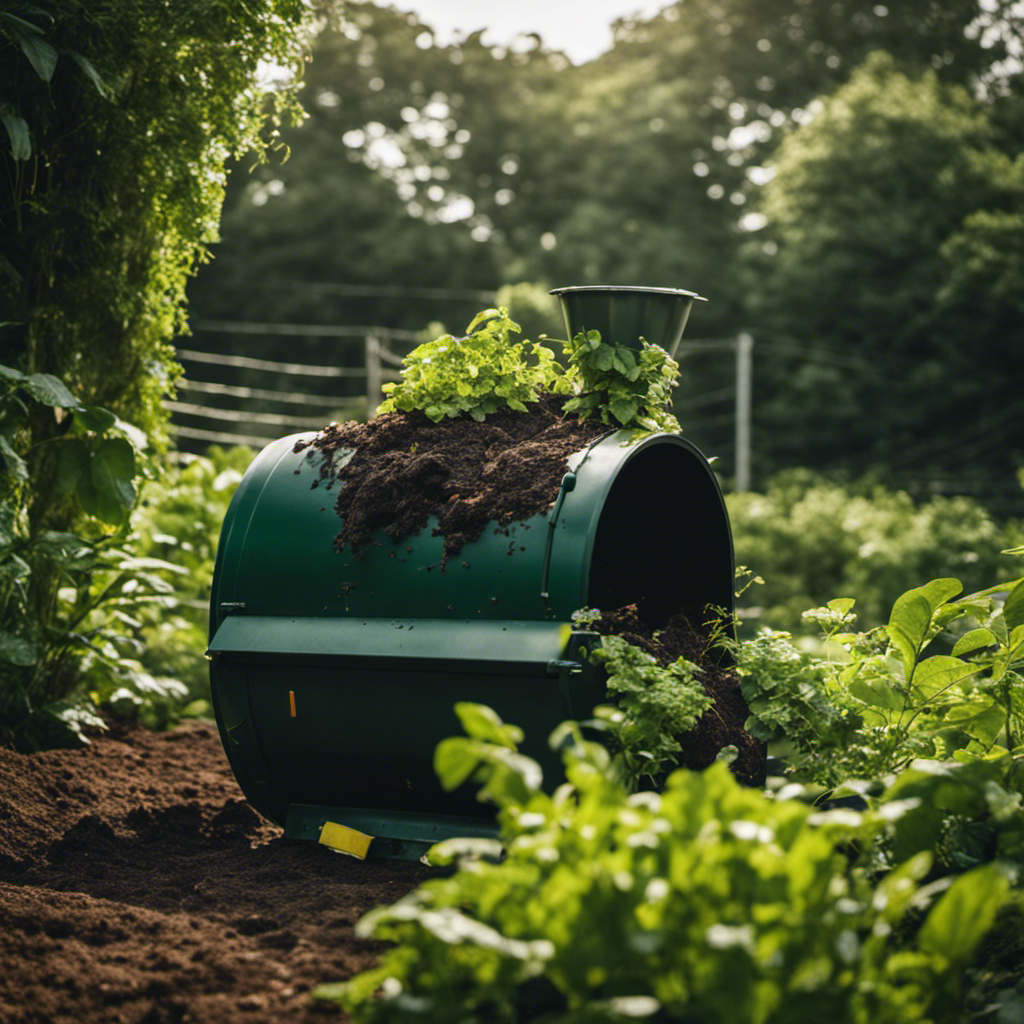
Next, let’s discuss the benefits and process of aerobic composting using a compost tumbler. This method is widely used for efficient organic waste decomposition. Aerobic composting involves breaking down organic materials with the help of oxygen, resulting in nutrient-rich compost that can enrich the soil in your organic farming practices.
Benefits of Using a Compost Tumbler:
-
Faster decomposition: The tumbling action of the compost tumbler speeds up the decomposition process by increasing oxygen flow and promoting the growth of beneficial microorganisms. This means you can obtain usable compost in less time compared to traditional composting methods.
-
Easy to use: Compost tumblers are designed for convenience and ease of use. They’ve a rotating drum that makes turning and mixing the compost effortless. This ensures that all the organic materials are evenly distributed and properly aerated, leading to faster decomposition and higher-quality compost.
-
Space-saving: Compost tumblers are compact and can be placed in small spaces like balconies or backyard gardens. This makes them ideal for urban dwellers or anyone with limited space for composting.
Troubleshooting Tips for Aerobic Composting Using a Compost Tumbler:
-
Ensure proper moisture levels: The compost should be moist but not too wet or too dry. If it’s too dry, add water. If it’s too wet, add dry materials like leaves or sawdust.
-
Maintain the right balance of green and brown materials: A good mix of nitrogen-rich green materials (e.g., kitchen scraps, grass clippings) and carbon-rich brown materials (e.g., dried leaves, straw) is essential for successful composting.
-
Regularly turn the compost: Turning the compost every few days helps aerate it and distribute heat evenly, preventing unpleasant odors and speeding up decomposition.
Composting Using Green Manure Cover Crops
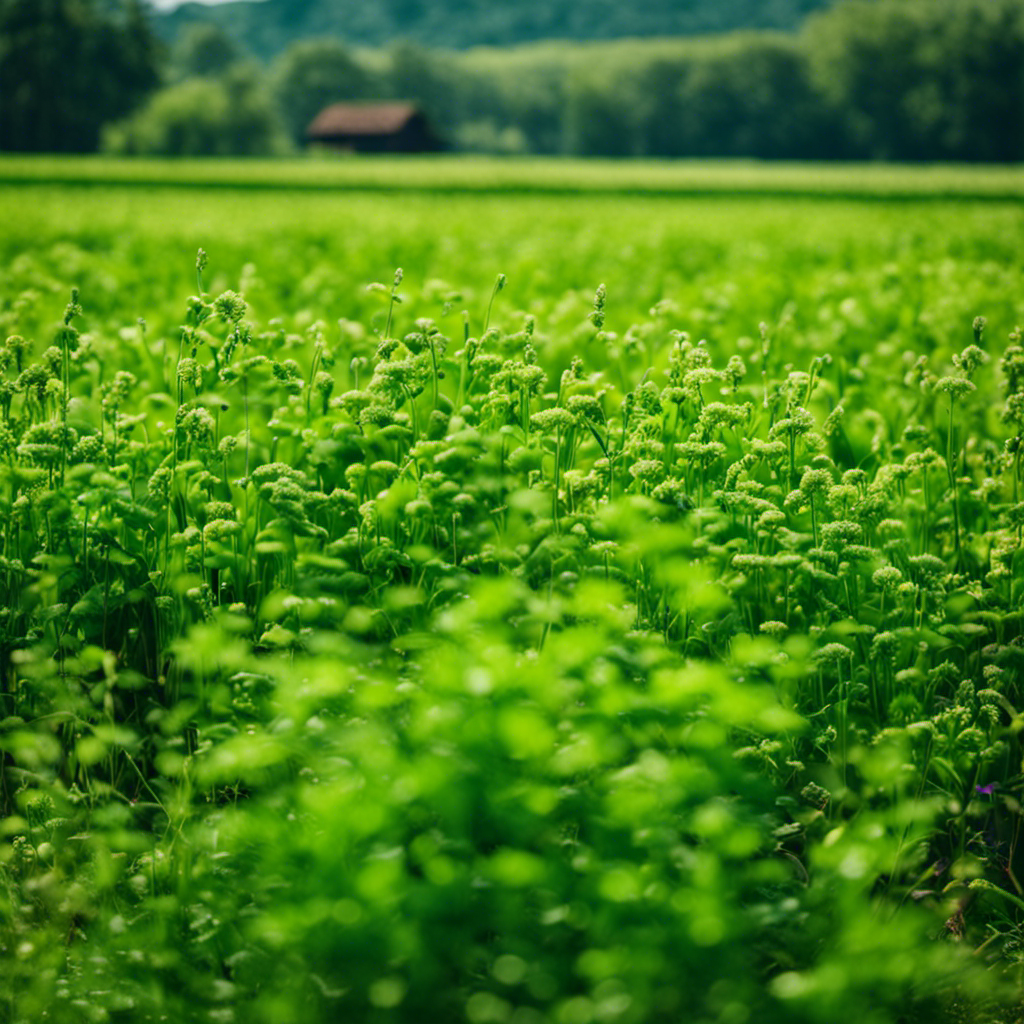
Composting Using Green Manure Cover Crops
When it comes to composting methods, one highly effective technique for enhancing soil fertility in organic farming is composting using green manure cover crops. Green manure cover crops are plants that are specifically grown and cultivated to improve the quality of the soil. These crops offer numerous benefits for composting.
One important benefit of green manure cover crops is their ability to add organic matter to the soil. As these crops grow, they absorb nutrients from the soil. When they’re cut down and incorporated into the compost pile, these nutrients are returned to the soil. This organic matter not only improves the soil structure but also increases water retention and enhances nutrient availability for future crops.
Another advantage of certain green manure cover crops, such as legumes, is their ability to fix nitrogen from the atmosphere. Nitrogen fixation is the process by which these plants convert atmospheric nitrogen into a form that can be used by other plants. This reduces the need for synthetic fertilizers and promotes a more sustainable approach to farming.
Some of the best green manure cover crops for composting include clover, vetch, and alfalfa. These crops have deep root systems that help break up compacted soil and improve drainage. Additionally, they’ve high carbon to nitrogen ratios, which makes them excellent sources of organic matter for composting.
Composting with green manure cover crops is a valuable technique for enhancing soil fertility in organic farming. By adding organic matter and fixing nitrogen, these crops contribute to the overall health and productivity of the soil. Incorporating cover crops such as clover, vetch, and alfalfa into your composting routine can greatly benefit your organic farming practices.
Conclusion
Choosing the right composting method is essential for achieving superior results in organic farming. Just like a symphony conductor carefully selects the right instruments to create a harmonious melody, farmers must carefully select the appropriate composting method to create nutrient-rich soil.
There are various effective composting techniques available, including traditional methods, vermicomposting with earthworms, bokashi composting, aerobic composting using a compost tumbler, and composting with green manure cover crops. Each method plays a vital role in the success of organic farming.
By composting wisely, farmers can enjoy the benefits of healthy and thriving crops.
